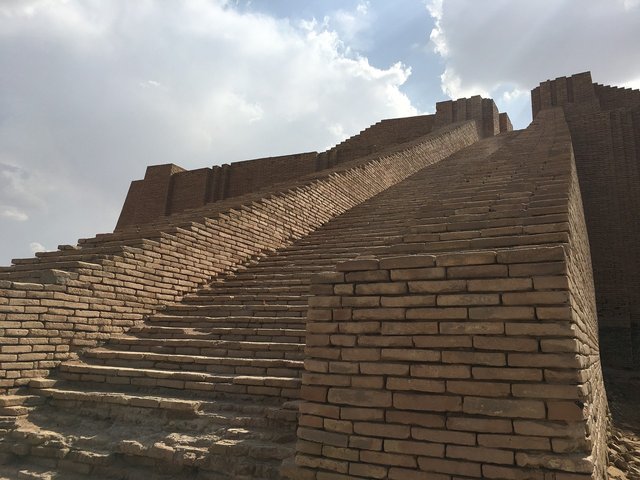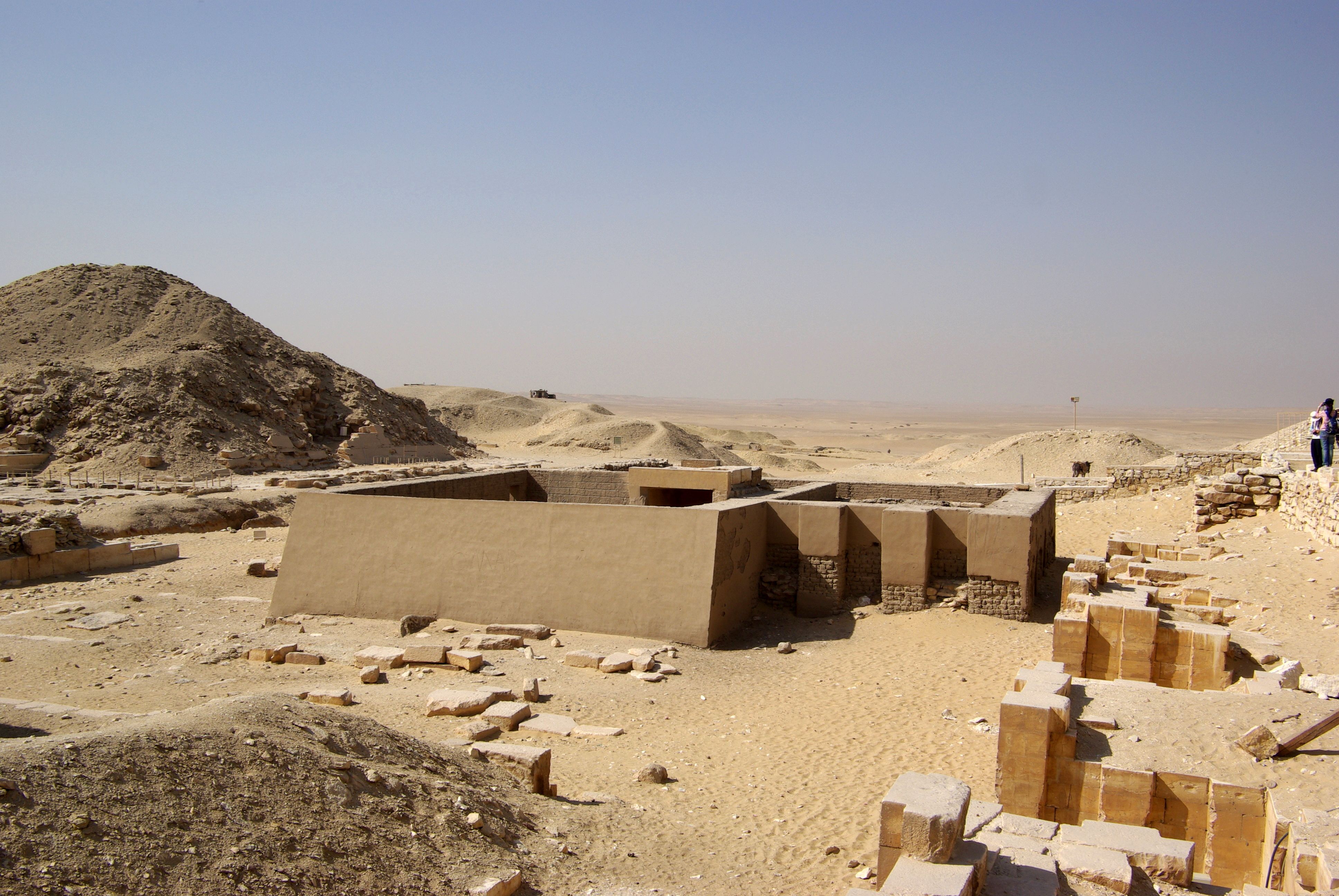I materiali dell'Architettura: I Laterizi - Prima Parte// Materials of Architecture: The Bricks - First Part [ITA - ENG]

CCO Creative Commons Ziqqurat di Ur

Ciao bella gente!
Lo so, sono stato assente in questi ultimi due giorni, e mi scuso per avervi fatto attendere tanto per un mio nuovo articolo… ma quanta modestia eh?! :) Scherzi a parte, mi spiace non esserci riuscito prima, ma comunque adesso sono qui e sono pronto a scrivere la prossima serie di articoli dedicata al mondo dell’architettura e più precisamente, come ben sapete, ai materiali da costruzione. Che dire? Rilassatevi, dimenticate gli altri impegni e… buona lettura a tutti!
Dopo aver scoperto quanto il materiale lapideo sia stato importante e protagonista nel mondo dell’architettura, oggi si apre un nuovo capitolo. Assieme alla pietra, a condividere origini antiche di migliaia di anni c’è un altro materiale fondamentale per il processo evolutivo dell’architettura, che si è reso altrettanto protagonista e indispensabile per le costruzioni nel mondo: signori lettori, è venuto il momento di parlare di… laterizi!
- Le origini
Come ho anticipato pocanzi, il laterizio è uno di quei materiali le cui origini risalgono a migliaia di anni fa. In generale questo tipo di materiale trova largo consenso soprattutto nelle zone in cui il materiale lapideo è meno presente o comunque più difficilmente reperibile. Tuttavia, anche laddove la pietra era presente, si sviluppava comunque una sorta di edilizia minore, che prevedeva l’impiego di materiali argillosi in quanto più economici e veloci.
Ma a questo punto la domanda che vi porrete è: cos’è il laterizio? Ebbene, il laterizio è un materiale ottenuto artificialmente, infatti si ottiene con la cottura di argilla opportunamente preparata, modellata ed infine essiccata. Con questo processo sono dunque realizzabili pezzi di diverse forme e dimensioni. Oltre l’argilla, che rappresenta il principale dei componenti, vi sono anche, nelle dovute proporzioni, carbonato di calcio e acqua. Il mattone ottenuto con argilla non cotta veniva chiamato adobe.
Le prime testimonianze di impiego del laterizio si fanno risalire intorno all’VIII millennio a.C. in Giordania. Più precisamente in Palestina, nella città di Gerico, nota per l’appunto come prima città dell’uomo, sono stati rinvenuti i resti di edifici realizzati con mattoni crudi di argilla essiccati al sole. Nell’antico Oriente, ed in particolare in Egitto e Mesopotamia, questo materiale, ebbe una lunga tradizione legata sia alla scarsa presenza ed elevato costo di materiali quali pietra e legno, sia alle condizioni ambientali favorevoli dovute alla presenza di risorse infinite di acqua e calore del sole.
Per quanto concerne l’Egitto, le prime costruzioni in mattoni crudi erano gli ambienti di servizio ma soprattutto i sepolcri destinati alle prime dinastie faraoniche. Queste costruzioni, che si presentavano a pianta quadrangolare, venivano dette mastabe e diedero origine alle prime piramidi a gradoni. Solo successivamente si passò all’uso di altri materiali più resistenti come la pietra, con cui furono erette le famose piramidi di Giza.
In merito alla Mesopotamia, è intorno al V millennio a.C. che la produzione del laterizio diviene “standardizzata” nella forma rettangolare. Successivamente, impiegando i laterizi assieme al bitume, si realizzarono le torri babilonesi dette ziqqurat, maestosi esempi di templi a gradoni a base quadrilatera il cui più celebre esempio è quella di Ur, risalente al 2300 a.C. circa.
Come abbiamo visto parlando della pietra, la civiltà greca diede grande importanza soprattutto all’architettura a carattere religioso, le cui costruzioni emblema erano i templi. Questi edifici erano costituiti da un portico antistante realizzato con mattoni di argilla essiccata al sole e con travi di legno a sostegno delle coperture. Ma il mattone, oltre che nella forma cruda, venne impiegato anche e soprattutto da cotto, e la diffusione di questa tecnologia,in Italia, arrivò tramite i coloni greci.
I primi ad utilizzare il mattone cotto in Italia furono gli etruschi, i quali, infatti, realizzarono molte importanti costruzioni con l’ausilio di questo materiale. Basti pensare, per fare un esempio, alle antiche mura di Arezzo.
Ma i protagonisti indiscussi, veri maestri della tecnica costruttiva dei laterizi, sono certamente gli antichi Romani, la cui produzione del mattone crudo, detto lateres, avveniva mediante argilla cretosa chiara o rossa. Con l’architettura romana possiamo affermare che la tecnologia dei laterizi cotti raggiunse certamente la sua massima espressione… ma di questo, cari amici lettori, ne parliamo meglio nel prossimo post!
Anche per oggi abbiamo terminato, spero vi siate rilassati e incuriositi. A me, come sempre, non resta che ringraziarvi per esser passati di qui e avermi dedicato un pochino del vostro tempo. Se ne avete voglia e tempo, per l’appunto, ci ritroviamo al prossimo articolo. Vi abbraccio tutti!
L'Ego dice: "Quando ogni cosa andrà a posto troverò la pace".
Lo Spirito dice: "Trova la pace e ogni cosa andrà a posto".

CCO Creative Commons Mastaba

Hey guys!
I know, I've been away for the last two days, and I apologize for making you wait so long for my new article ... but how much modesty eh ?! :) Seriously, I'm sorry I did not succeed before, but anyway now I'm here and I'm ready to write the next series of articles dedicated to the world of architecture and more precisely, as you well know, to building materials. What to say? Relax, forget about other commitments and... enjoy reading to all!
After discovering how much the stone material was important and protagonist in the world of architecture, today a new chapter opens up. Together with the stone, to share ancient origins of thousands of years there is another fundamental material for the evolutionary process of architecture, which has become equally important and indispensable for constructions in the world: gentlemen readers, the time has come to speak of... bricks!
- The origins
As I said earlier, brick is one of those materials whose origins date back to thousands of years ago. In general this type of material is widely accepted especially in areas where stone material is less present or otherwise more difficult to find. However, even where the stone was present, a sort of minor construction was still developing, which involved the use of clayey materials as they were cheaper and faster.
But at this point the question you ask yourself is: what is bricks? Well, the brick is an artificially obtained material, in fact it is obtained with the clay firing appropriately prepared, modeled and finally dried. With this process, pieces of different shapes and sizes can therefore be made. Besides the clay, which is the main component, there are also, in the proper proportions, calcium carbonate and water. The brick obtained with uncoated clay was called adobe.
The first evidence of the use of bricks can be traced back around the eighth millennium BC. in Jordan. More precisely in Palestine, in the city of Jericho, known as the first man-made city, the remains of buildings made of raw bricks of sun-dried clay were found . In the ancient East, and in particular in Egypt and Mesopotamia, this material had a long tradition linked both to the low presence and high cost of materials such as stone and wood, and to the favorable environmental conditions due to the presence of infinite resources of water and heat. Of sun.
As far as Egypt is concerned, the first buildings in raw bricks were the service areas but above all the sepulchres destined for the first Pharaonic dynasties. These quadrangular constructions were called mastabe and gave rise to the first stepped pyramids. Only later did the use of other more resistant materials such as stone, with which the famous pyramids of Giza were erected.
Regarding Mesopotamia, it is around the 5th millennium BC that the production of bricks becomes "standardized" in the rectangular shape. Later, using bricks together with the bitumen, the Babylonian towers called ziqqurat were built, majestic examples of stepped temples with a quadrilateral base whose most famous example is that of Ur, dating back to 2300 BC. about.
As we have seen when speaking of the stone, the Greek civilization gave great importance above all to the religious architecture, whose buildings were the emblem of the temples. These buildings consisted of a front porch made of sun-dried clay bricks and wooden beams supporting the roofs. But the brick, as well as in the raw form, was also used and above all by terracotta, and the diffusion of this technology in Italy came through the Greek settlers.
The first to use the brick cooked in Italy were the Etruscans, who, in fact, made many important buildings with the help of this material. Just think, to give an example, the ancient walls of Arezzo.
But the undisputed protagonists, true masters of the construction technique of bricks, are certainly the ancient Romans, whose production of the raw brick, called lateres, took place with clear or red clay. With the Roman architecture we can affirm that the technology of the baked bricks certainly reached its maximum expression ... but of this, dear reader friends, we will talk better in the next post!
Even today we have finished, I hope you are relaxed and intrigued. To me, as always, all that remains is to thank you for being here and having dedicated a little of your time. If you want and time, precisely, we are back to the next article. I embrace you all!
The ego says: "When everything goes right I will find peace"
The Spirit says: "Find peace and everything will fall into place"
CCO Creative Commons Basilica del Buon Pastore, Ostia antica
Un'analisi interessante, un po' di sana tecnica serve a tutti! L'architettura è un'arte, certo, ma non sarebbe possibile senza la base materica su cui inevitabilmente poggia! Sono curiosa di leggere i prossimi articoli, certa che saranno ugualmente interessanti e stimolanti!
Grazie della condivisione !
Ti ringrazio molto, concordo pienamente con te... e, nel mio piccolo, spero di trasmettere questo stesso pensiero a chi mi legge. A presto! :)
Adoro le tecniche costruttive, avendo scavato per un po’ nel cuore di Roma. Trovo che il nucleo grezzo dell’architettura abbia un fascino che nessuna copertura decorativa potrebbe mai avere. Dai, facci sognare coi bolli laterizi 😉
Grazie!!! Assolutamente vero... senza queste meravigliose basi non saremmo arrivati da nessuna parte... ho postato giusto poco fa... e ovviamente ho menzionato i bolli laterizi! ;) Ci si legge!